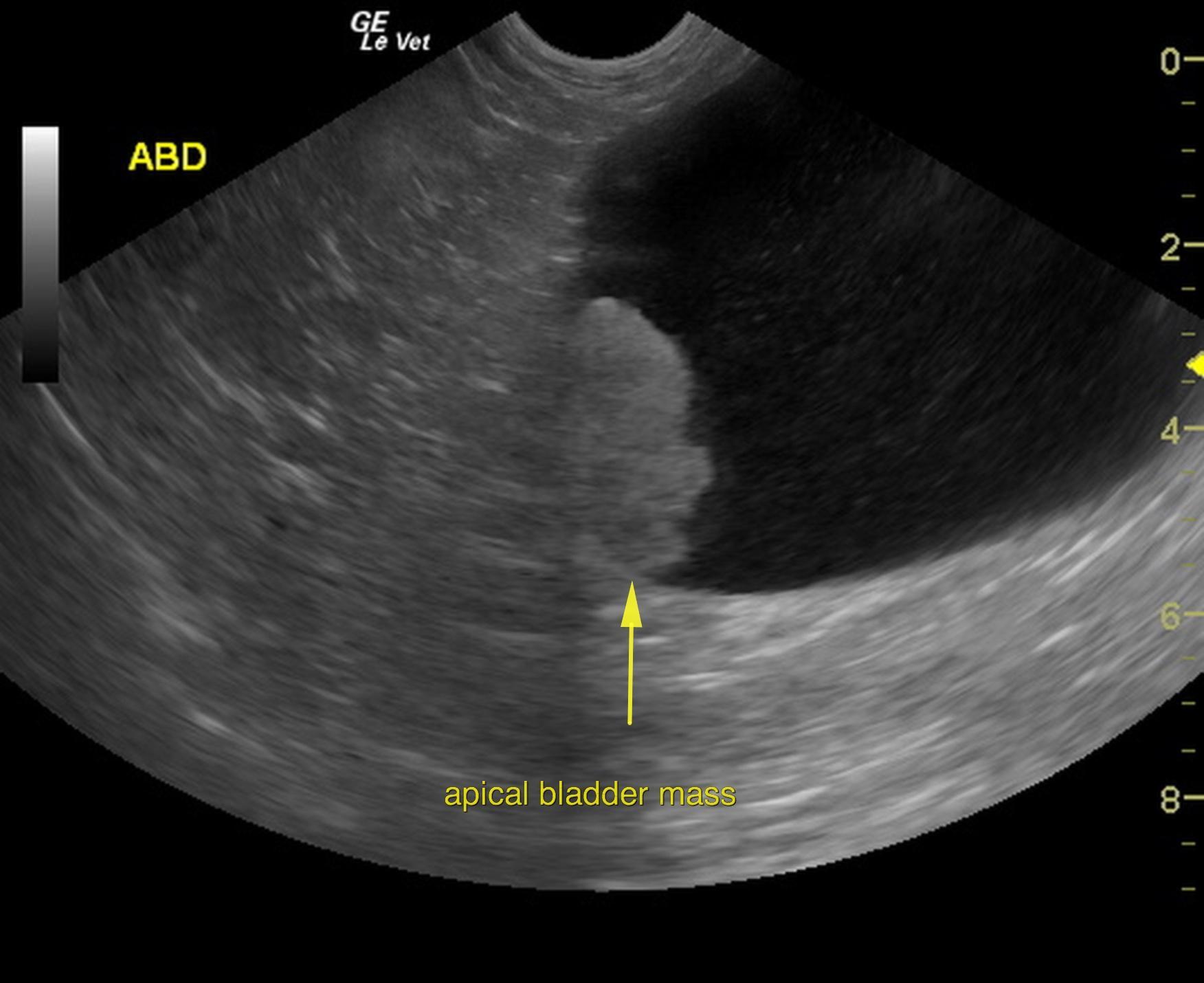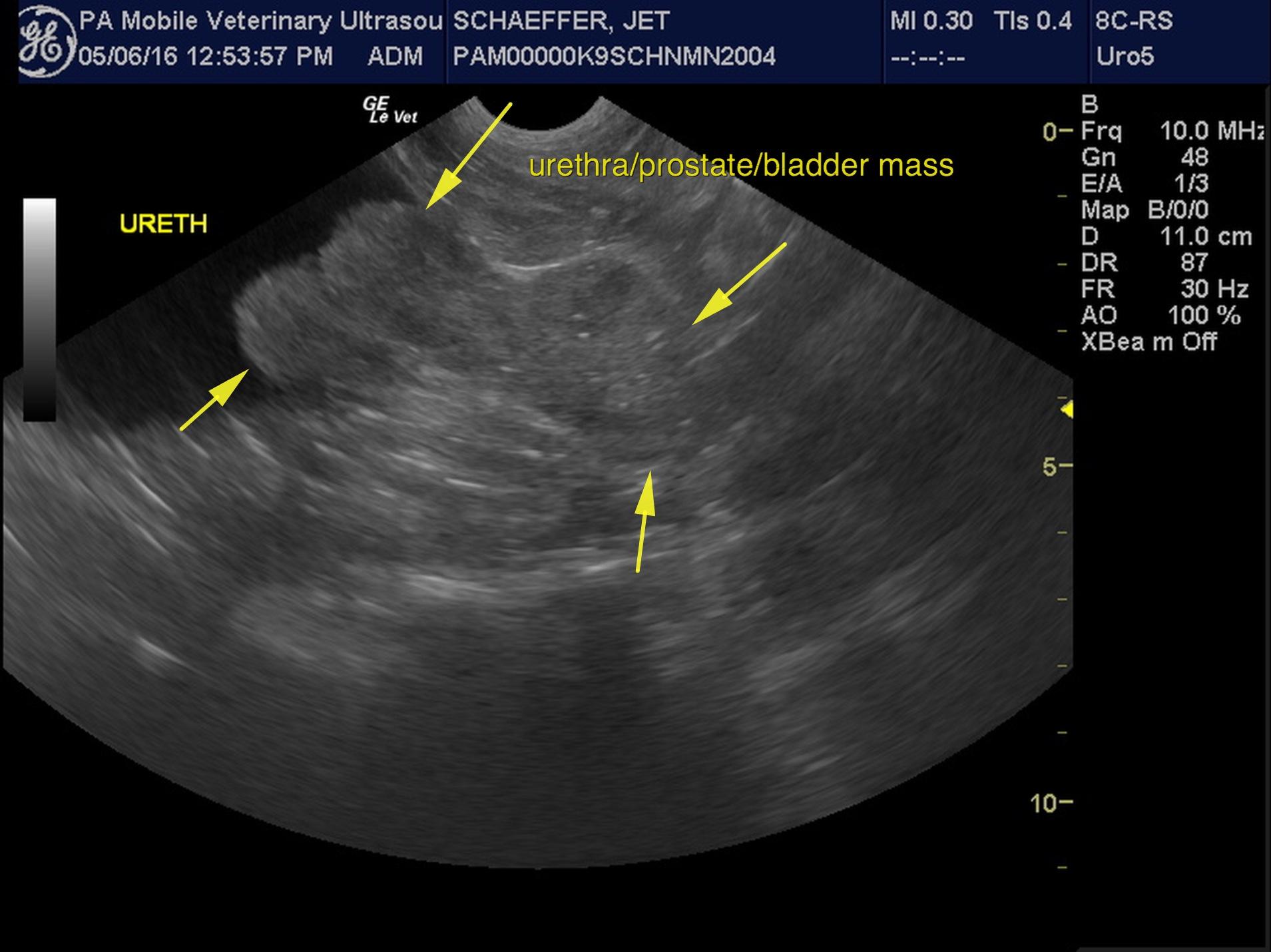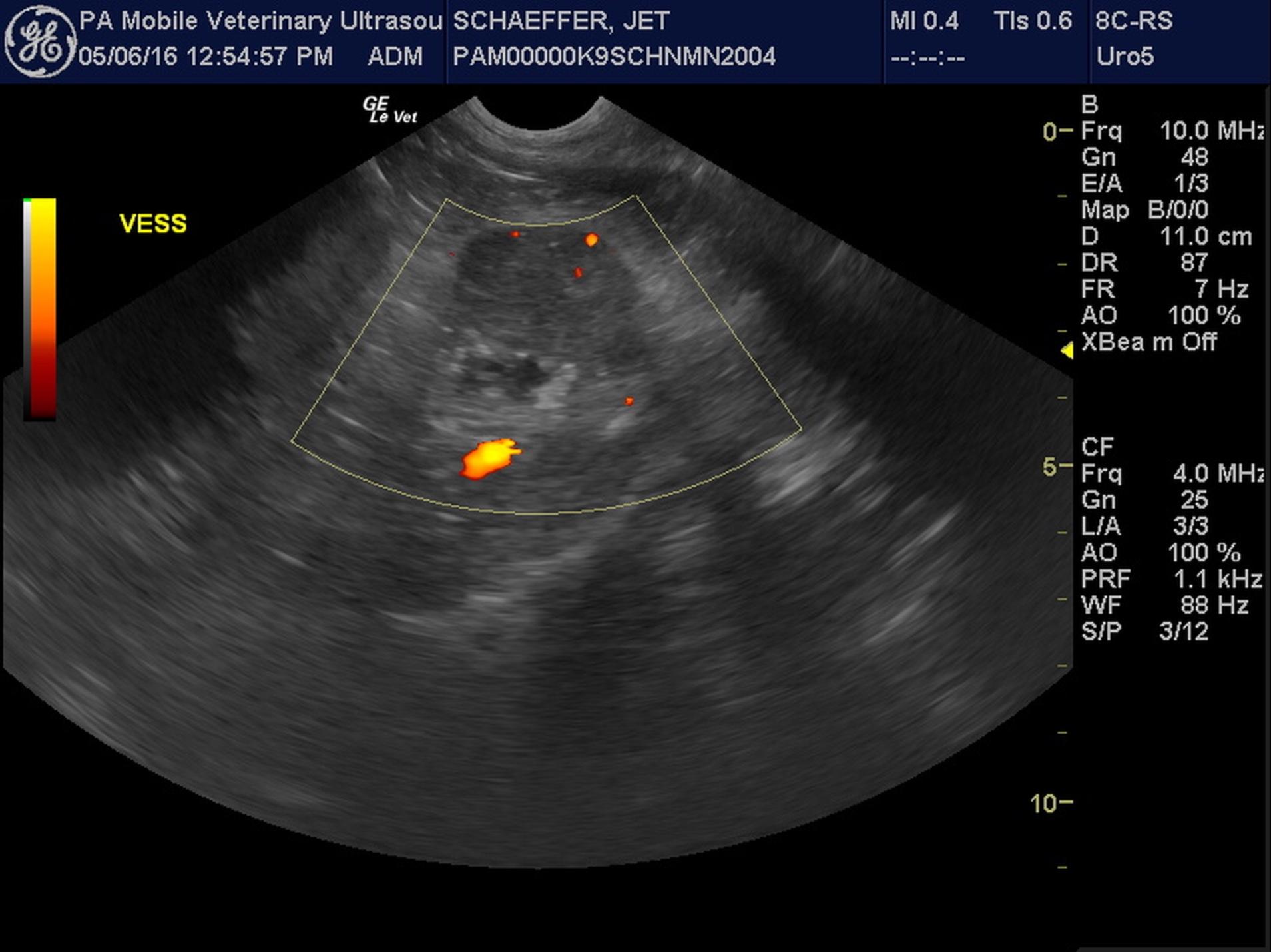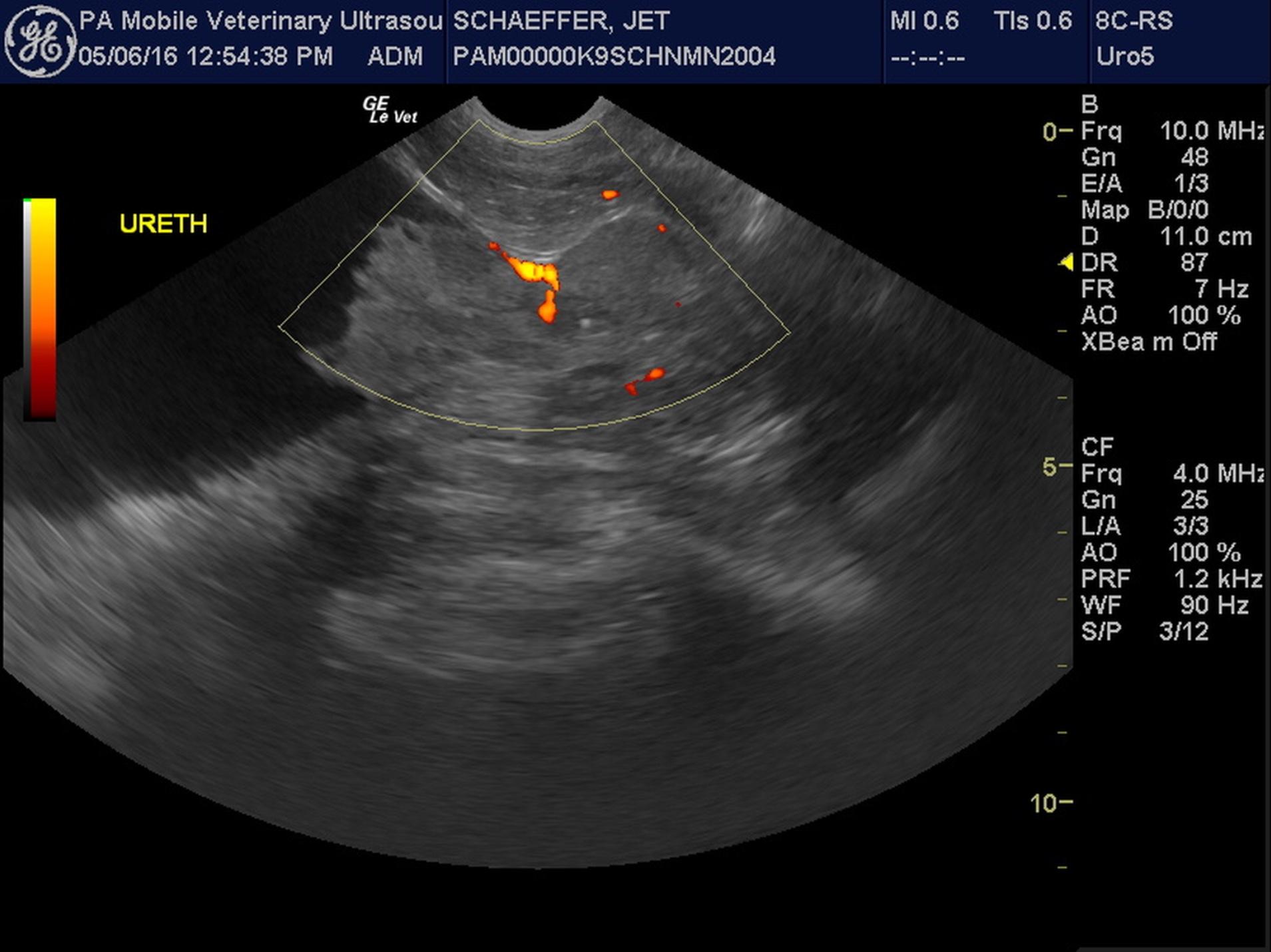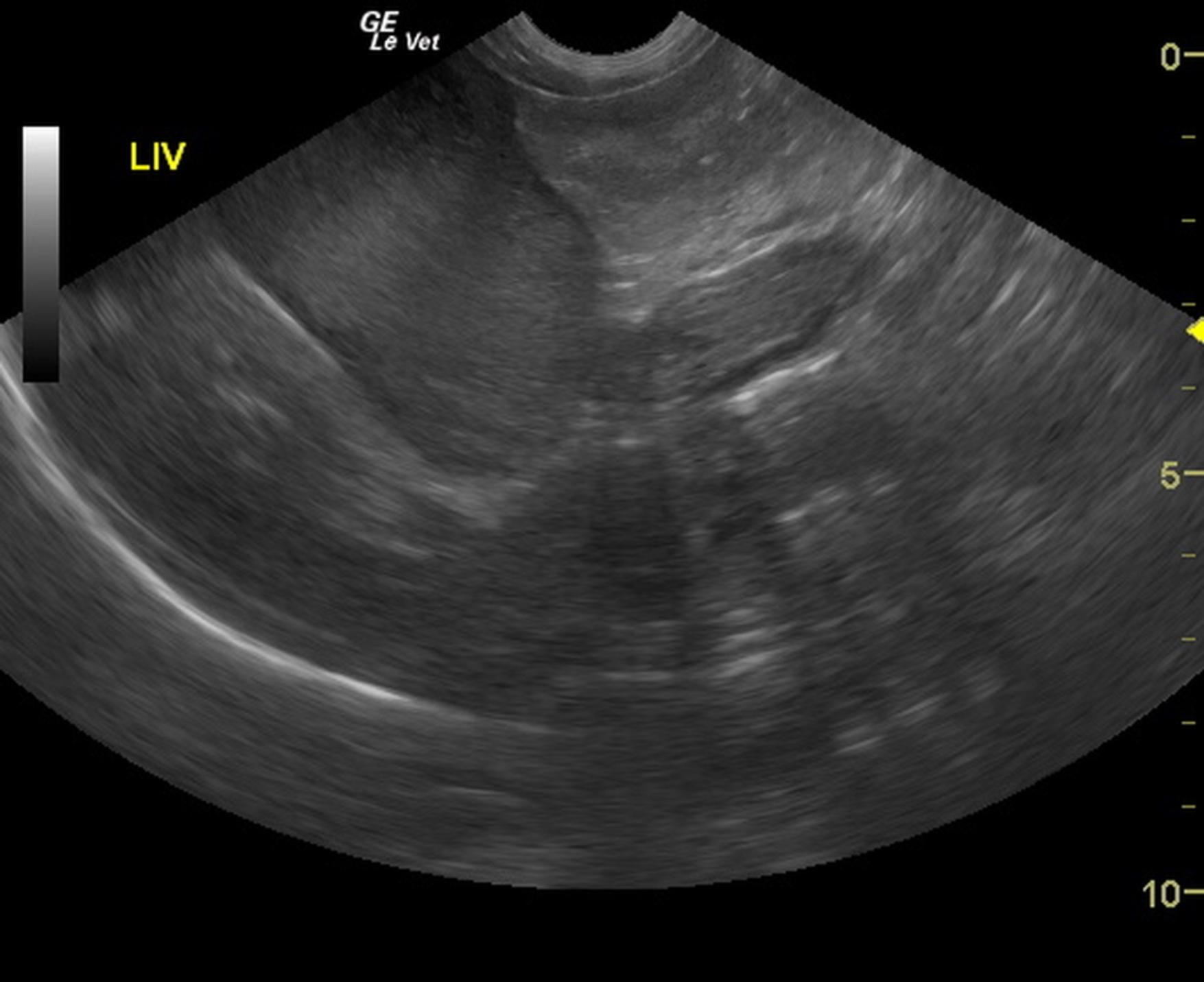A 12-year-old NM Schnauzer was presented for evaluation of stranguria and dribbling. Urinalysis showed normal SG (1.046) proteinuria, glycosuria, and leukouria. Abnormalities on CBC and serum biochemistry were thrombocytosis (638) and elevated ALT (127) and ALP (865).
A 12-year-old NM Schnauzer was presented for evaluation of stranguria and dribbling. Urinalysis showed normal SG (1.046) proteinuria, glycosuria, and leukouria. Abnormalities on CBC and serum biochemistry were thrombocytosis (638) and elevated ALT (127) and ALP (865).
